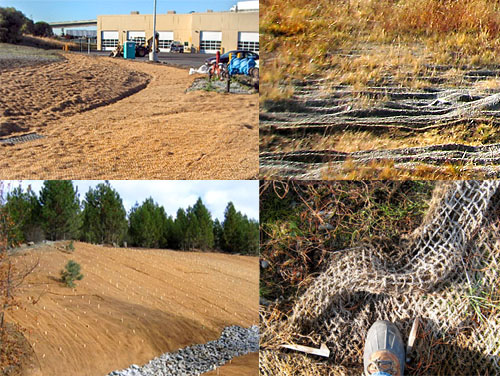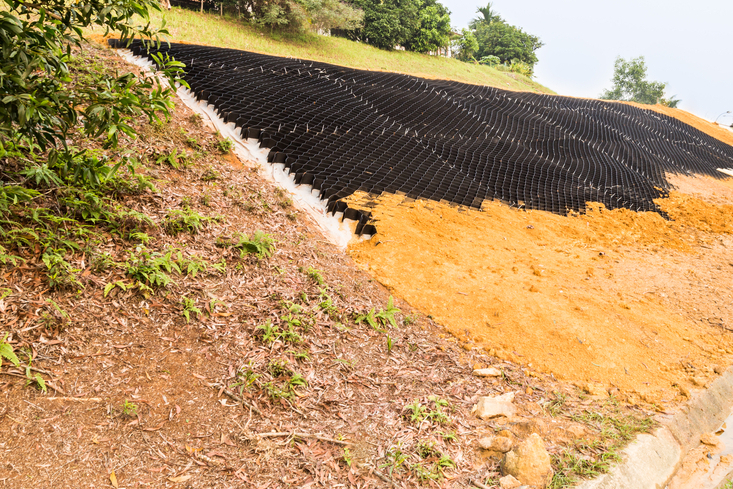Quality with Memphis Erosion Control Solutions hydroseeding
Wiki Article
Effective Erosion Control Strategies for Sustainable Land Management
Are you looking for ways to successfully handle disintegration on your land? Discover the various kinds of disintegration and their influence on your land, as well as natural methods to manage erosion. Discover just how to carry out reliable erosion control measures and ensure correct tracking and maintenance.Importance of Erosion Control in Sustainable Land Administration
Due to the fact that it assists prevent dirt destruction and loss,Erosion control is important for lasting land management. By applying effective disintegration control strategies, you can ensure the lasting health and wellness and performance of your land. Without appropriate erosion control measures, dirt erosion can happen, resulting in the loss of valuable topsoil that is abundant in nutrients necessary for plant growth.Because it assists to maintain soil fertility,One of the primary reasons disintegration control is important is. When dirt erodes, it eliminates the raw material and nutrients that plants need to flourish. This can cause lowered crop yields and lowered efficiency of the land. In addition, erosion can bring about sedimentation in neighboring water bodies, which can adversely influence aquatic ecosystems.
An additional secret advantage of erosion control is the avoidance of land degradation. Disintegration can create the loss of important topsoil, which takes years to develop normally. This loss of topsoil can cause ineffective and barren land, making it challenging for plants to expand and for ecosystems to thrive. By implementing erosion control strategies such as terracing, contour plowing, and the use of cover plants, you can help stop land degradation and maintain the health of your land.

Types of Disintegration and Their Impact on Land
Recognizing the different kinds of disintegration and exactly how they impact the land can assist you apply better land monitoring techniques. Erosion is the process by which soil, rocks, and various other materials are slowly deteriorated and carried by natural forces such as water, ice, and wind. There are four major kinds of disintegration: sheet disintegration, rill erosion, gully erosion, and mass motion disintegration.Sheet disintegration occurs when a slim layer of dirt is gotten rid of consistently from the surface of the land. Rill erosion, on the other hand, happens when small channels or rivulets are developed on the land due to the circulation of water.
Gully disintegration is much more serious and occurs when larger networks or gullies are created as a result of the continual circulation of water. This sort of disintegration can create substantial damages to the land, causing loss of topsoil and vegetation. Mass movement erosion refers to the movement of huge amounts of dirt and rocks downhill due to the pressure of gravity. This can happen in the kind of landslides or sagging.
Recognizing these various kinds of disintegration and their impact on the land is vital for reliable land administration. By executing erosion control techniques such as terracing, contour plowing, and reforestation, you can lessen disintegration and maintain the stability of the hydroseeding land. In addition, practicing great land monitoring techniques like correct crop turning, preserving ground cover, and using debris control actions can further assist in protecting against erosion.
All-natural Disintegration Control Approaches for Lasting Land Monitoring
By implementing natural disintegration control techniques, you can effectively take care of and maintain the honesty of your land. In areas where erosion is a considerable concern, setting up erosion control blankets or mats can be valuable. In general, by using these all-natural disintegration control methods, you can efficiently manage and protect your land from disintegration, guaranteeing its long-lasting sustainability.Implementing Efficient Disintegration Control Actions

One such technique is the usage of disintegration control coverings. In addition, planting greenery is an essential step in disintegration control. By carrying out these proven erosion control techniques, you can successfully safeguard your land and decrease the danger of erosion and its harmful effects.
Tracking and Upkeep of Disintegration Control Techniques
When monitoring and keeping disintegration control actions, it's essential to regularly check the erosion control coverings, balconies, vegetation, and sediment control measures to ensure they are operating properly and efficiently avoiding disintegration (Memphis Erosion Control Solutions excavation). By carrying out routine examinations, you can identify any problems or deficiencies in the disintegration control methods and take needed activities to correct them
Start by checking the disintegration control blankets. Look for indicators of damage or wear, such as rips or exposed soil.
Following, inspect the balconies. Inspect for indicators of disintegration, such as sediment accumulation or uneven surface areas. Ensure that the balconies are appropriately developed and kept to divert water circulation and minimize disintegration. Clear any type of accumulated debris to maintain their capability.
Examine the vegetation in the disintegration control location. Correct plants protection aids stop and maintain the soil erosion.
Last but not least, inspect the sediment control measures, such as debris basins or sediment fences. Ensure they are appropriately installed and working as meant. Memphis Erosion Control Solutions trenching Eliminate any type of gathered sediment and make certain that the controls are properly maintained.
Regular monitoring and maintenance of disintegration control procedures hydroseeding are critical for their long-term effectiveness in preventing erosion and preserving sustainable land administration methods.
Final Thought
In final thought, you should focus on erosion control for lasting land management. By recognizing the various types of disintegration and their effect on the land, you can implement reliable all-natural disintegration control techniques.Discover the different types of disintegration and their impact on your land, as well as natural methods to manage erosion. There are four primary kinds of disintegration: sheet disintegration, rill disintegration, gully disintegration, and mass motion disintegration.
By applying disintegration control techniques such as terracing, contour plowing, and reforestation, you can decrease erosion and preserve the integrity of the land (Memphis Erosion Control Solutions trenching). On the whole, by making use of these all-natural disintegration control techniques, you can successfully handle and secure your land from erosion, ensuring its long-lasting sustainability
By comprehending the various types of disintegration and their influence on the land, you can carry out effective all-natural disintegration control approaches.
Report this wiki page